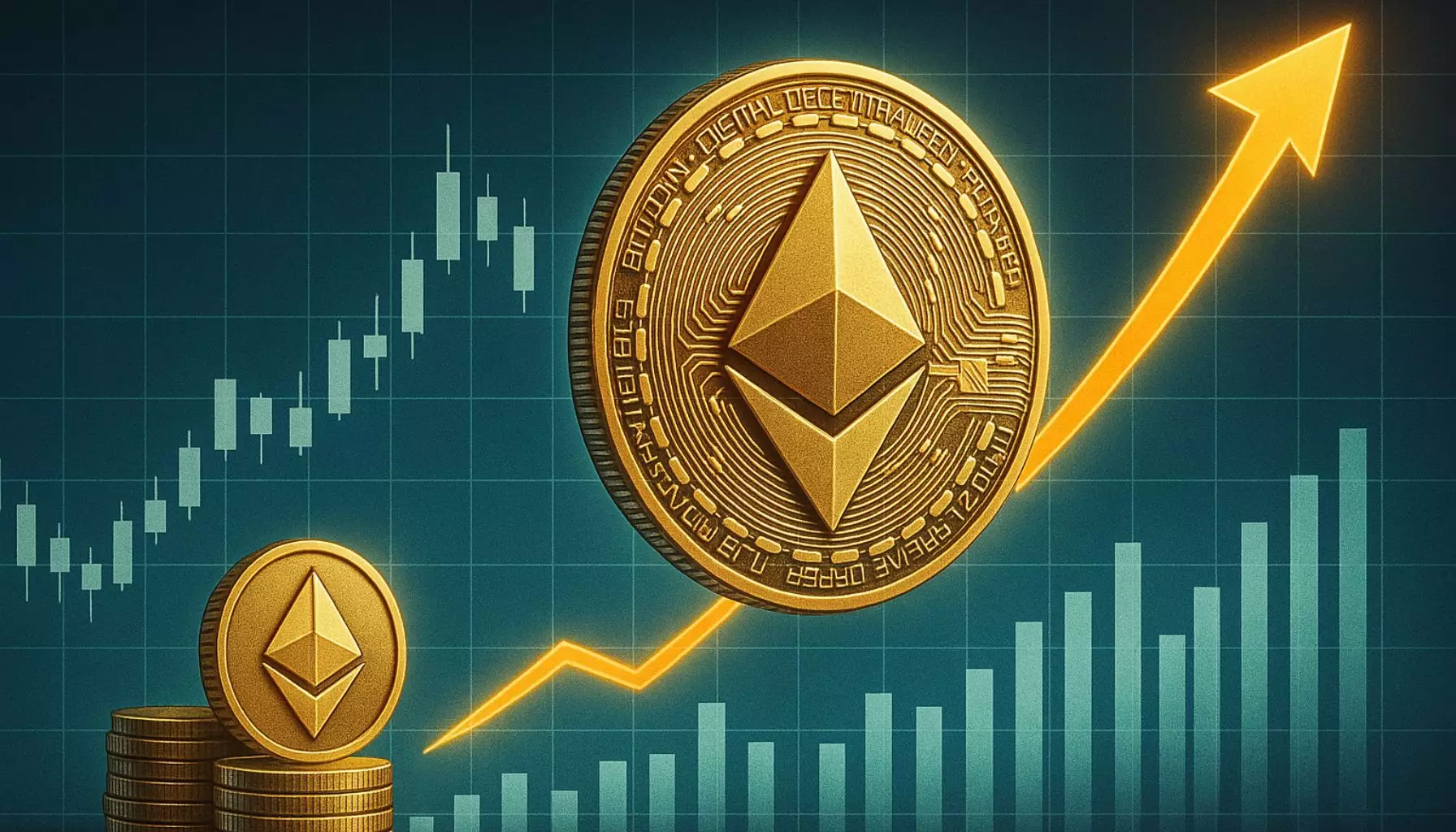Ethereum’s price action lately has been the embodiment of tension and uncertainty, trading in a confined range between roughly $2,200 and $2,800 for weeks. On the surface, the resilience shown by ETH hovering above $2,400 might be interpreted as strength — it has withstood abrupt price swings and refused to capitulate amid broader market volatility. But this stability is deceptive. The inability to decisively break through key resistance levels, particularly around $2,500 and $2,800, reveals not just a battle between bulls and bears but also the market’s unwillingness to commit. This deadlock may reflect deeper, incontrovertible weaknesses beneath the surface, a warning sign rather than a reassuring indicator.
The underlying issue is that Ethereum’s price is heavily tethered to sentiment shifts that are currently muddled by macroeconomic uncertainty. The macro backdrop includes strategically complicated factors: fluctuating interest rates, geopolitical tensions, and unpredictable liquidity conditions which bleed into risk assets like Ethereum. Against this swirling storm, Ethereum’s minor gains do little to inspire lasting confidence. This scenario feels more like a fragile détente between cautious investors rather than a true buildup of bullish momentum.
Accumulation Doesn’t Guarantee a Surge
There is talk around the market about a significant uptick in accumulation from long-term Ethereum holders, as evidenced by data from industry sources such as CryptoQuant. This accumulation is often touted as a harbinger of an impending breakout, suggesting that seasoned investors are positioning themselves for higher prices ahead. Yet this narrative should be approached skeptically. Accumulation patterns can be deceptive, especially in markets dominated by speculative hype and cyclical waves of fear and greed.
HODLers may very well be increasing their exposure, but this could also represent a defensive stance rather than a bullish charge. When prices hover in limbo, long-term holders sometimes double down out of necessity or conviction rooted in ideology rather than an objective assessment of short-term fundamentals. This means that while accumulation data is an interesting signal, it does not unconditionally translate to upward momentum. In fact, the disconnect between steady accumulation and languishing prices may be a symptom of the market’s deep fissures, signaling buyer hesitation despite apparent confidence.
Technical Indicators: A Double-Edged Sword
Ethereum’s technical setup is a mixed bag at best, further supporting the idea that the cryptocurrency stands at a precarious crossroads. The price repeatedly tests resistance near the 50- and 100-period Simple Moving Averages (SMAs) around $2,500 but can’t sustain gains past this threshold, hinting at persistent selling pressure from institutional or algorithmic traders. Meanwhile, the 200-period SMA near $2,170 acts as a notable floor for price support, reinforcing a technical buffer that, for now, prevents dramatic downside.
Still, these technical markers don’t necessarily imply a clean path forward. Rather than providing clear directional signals, moving averages in such proximity often portend sideways action or sudden volatile reversals. Volume patterns—relatively muted in recent sessions—underscore market indecision. Without growing trading volume to validate price moves, any breakout through resistance may prove unsustainable, vulnerable to swift reversals that trap late entrants seeking quick profits. In short, Ethereum’s technical picture today should keep traders cautious rather than emboldened.
Altseason Isn’t Coming Anytime Soon
The crypto community has long awaited the much-hyped “altseason” — a phase where alternative cryptocurrencies rally strongly, often led by Ethereum’s price surge. However, Ethereum’s ongoing inability to break above critical price points undermines this expectation. The drawn-out consolidation phase—characterized by swings within a tightly defined range—suggests that the altcoin market remains dormant, lacking the ignition spark required to launch a sustained uptrend.
From a center-right liberal economic perspective, this scenario underlines the importance of market discipline and prudent investing rather than chasing speculative bubbles. The delay in altseason signals that many investors are demanding more robust fundamentals and clearer macroeconomic certainty before placing serious bets on risk-heavy digital assets. This healthy skepticism could protect the market from irrational exuberance, which tends to end in painful corrections. Patience may not be glamorous, but given the erratic global financial landscape, it is undoubtedly the wiser course of action.
Ethereum Holds Center Stage in an Uncertain Arena
Despite its battles, Ethereum remains the cornerstone of the decentralized finance ecosystem, and its price dynamics reverberate beyond just the crypto market bubble. This prominent role amplifies the impact of its current struggles. The standoff it experiences is emblematic of an entire sector grappling with maturity issues. Will Ethereum suddenly break out and ignite a new wave of investor fervor, or does the cryptocurrency face a sustained period of stagnation with episodic volatility?
While some traders are optimistic, banking on technical setups and accumulation to spur a breakout, the prudent stance is to remain cautiously observant. Rarely do assets trapped in such indecision stages make significant moves without clear catalysts—be they regulatory clarity, macroeconomic improvements, or groundbreaking technological upgrades. Until such elements materialize, betting exclusively on a bullish breakout appears premature and speculative.
Navigating Ethereum’s complex landscape requires recognizing its current fragility disguised as resilience. Only those prepared for abrupt shifts and patient enough to sift speculation from signal will prosper in what remains an intensely volatile, margin-thin market environment.
















Leave a Reply